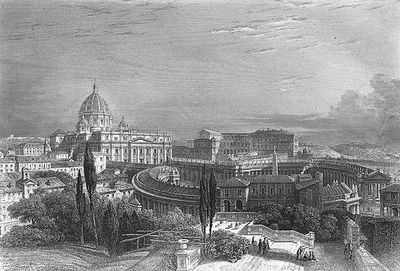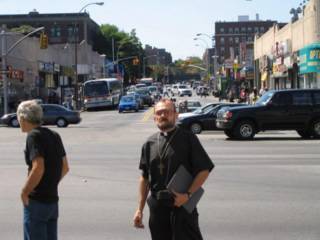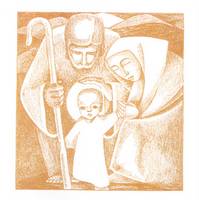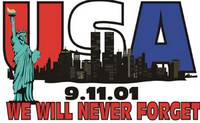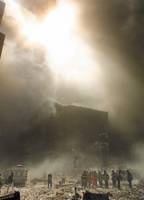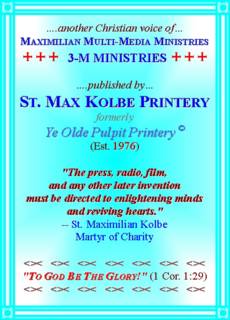Holy Father RELAPSES and is Hospitalized Again
Let us pray for Pope John Paul the Great who has relapsed from the flu and was rehospitalized a few hours ago (10:45 a.m. Rome time). His Holiness was rushed to the hospital in an ambulance suffering fever and congestion which has compromised his breathing again since yesterday. He will undergo specialized care and more check-ups. Reportedly, His Holiness is NOT close to death as he was when his respitory crises developed two weeks ago and, thankfully, did NOT need a tube inserted into his windpipe to assist his breathing.
The 84-year-old Pontiff was rushed to the Gemelli Polyclinic Hospital on Feb. 1st after influenza caused a swollen throat and larynx spasms that inhibited his breathing. He was discharged nine days later on Feb. 10 and was out of the public eye Feb. 14-20 during the Vatican's annual Lenten retreat. This becomes his eighth hospitalization since his election in 1978.
The Pope's breathing problems could complicate the swallowing difficulties characteristic of his Parkinson's disease. The lack of coordination of the muscles involved make it easy for food or saliva to get into the lungs. May God forbid, that can cause a life-threatening pneumonia and is one of the most common causes of death among Parkinson's patients. Those muscle problems and the Pope's stooped posture also could make it difficult for him to head off infections by mustering a powerful enough cough to expel mucus out of his lungs. Please, God, grant him another speedy recovery and a healthy, vibrant STO LAT! (Polish: "May he live 100 years"). - And when he finally goes home to You, may he be wearing his work boots.
Pope John Paul the Great had been convalescing after his hospitalization and appeared to be making a rebound. At each new public appearance, he appeared stronger, more alert, and his voice was clearer. Rome has been particularly cold, wet and windy in recent days. The stubborn Polish Pope has twice appeared at his open studio window to address crowds in St. Peter's Square since his Feb. 10 discharge from the hospital.
Yesterday he made his longest public appearance since being discharged from the clinic two weeks ago. The determined Pope John Paul II presided over a video-link version of his weekly general audience yesterday from his private library. Although wheezing and gaunt, he spoke briefly in Italian, English, French, German, Spanish and Polish. That audience, broadcast to hundreds of visitors and pilgrims in the Vatican's audience hall, lasted more than 20 minutes at which he gave us His Papal Blessing.
His Holiness had been scheduled to lead an 11 a.m. ceremony, known as an "ordinary public consistory," finalizing plans for the canonization of five priests. Instead it was presided by the Vatican's second ranking official, Cardinal Angelo Sodano while the Pope was taken to Rome's Agostino Gemelli Polyclinic hospital where he occupies the entire 10th floor. This "Third Vatican" as some insiders call it has a suite on the 10th floor that also includes a chapel, kitchen and sleeping quarters for his longtime aide, Archbishop Stanislaw Dziwisz.
As if to meet a presaged press deadline, ironically, the Pope's fifth* book was finally released yesterday, just hours before he was hospitalized. "Memory and Identity; Conversations Between Millenniums" is 200 pages long and has been published in 11 languages. It is the second autobiography to be published during his Great Pontificate and follows his English translation release of "Rise, Let Us Be on Our Way" of six months ago.
"Memory and Identity", summarized by Joseph Cardinal Ratzinger as a "theology of history", examines the ideologies of evil, national socialism, and communism and explores their roots that derives from human behavior and the regimes that resulted. Within these first-hand memories, His Holiness also compares abortion to the Nazi genocide by reflecting on his experiences during the past century, and particularly under Nazi and Communist rule in his native Poland. He also recalls the attack of September 11, 2001 on the World Trade Center here in NYC, the attacks of May 11, 2004 in Madrid, and the massacre of Beslan, Russia, in September 2004.
Pope John Paul II also discussed his definitions of freedom and democracy with references to Aristotle and Catholic teachings. The Pontiff warns against the influence of atheistic materialism while noting the devastation caused by ideologies in the 20th centuries. By recognizing the dangers of an ideological approach, His Holiness instructs, the people of the 21st century can ensure a more prudent approach.
In the closing pages of the 200 pgs. book, the Pope describes the attempt on his life of May 13, 1981 in a style different from his previous texts and different from the rest of the book which is in a question and answer format. "Memory and Identity" is mainly given from conversations the Pope had with two Polish philosophers, Josef Tishner and Krystof Michalski, in his summer residence at Castelgandolfo in 1993.
The Italian publishing house Rizzoli will make the new book available to readers in the United States in English soon. (It is available via PRE-ORDER from Amazon.com for $13.57, at a $6.00 discount, and will be released on April 26th.) As with his previous titles, all the Pope's royalties from "Memory and Identity" will go to charity**.
* "Memory and Identity" is the fourth volume of reminiscences and reflections published by Pope John Paul II during his Pontificate. "Crossing the Threshold of Hope", based on an extensive interview, appeared in 1994. It was followed by "Gift and Mystery", a meditation on 50 years of priesthood, in 1996; and "Rise, Let Us Be on Our Way", about his experiences as a Bishop, in May 2004. "Crossing the Threshold of Hope" was a best seller, which has been translated into 32 languages and sold more than 20 million copies worldwide. Pope John Paul, a prolific writer even before he was ordained, has also produced poetic works, most recently "Roman Tryptic", which appeared in 2003 and was particularly successful in Italy and Poland.
** A large portion of the royalties from his "Rise, Let Us Be on Our Way" went to rebuild both Catholic and Orthodox churches that had been destroyed during the warfare in the Balkans.



